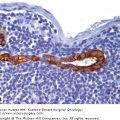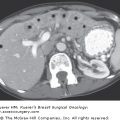The delivery of a diagnosis of breast cancer to a patient elicits a strong emotional response from the patient, and similarly, evokes an emotional response from the surgeon as well. The ability to deliver bad news in a way that helps improve communication and strengthen the patient–doctor relationship is a skill not often taught, although it is frequently required. Most studies have examined oncologists, and one found that 60% broke bad news to patients from 5 to 20 times per month. Fourteen percent delivered bad news more than 20 times a month. Less than 10% of those surveyed had any formal training in breaking bad news, and only 32% had any shadowing experience in watching others deliver diagnoses.1 An American Society of Clinical Oncology survey revealed that most participants cited “traumatic experience” as the most common source of learning communication on difficult topics.2
Women with breast cancer, in particular, have high levels of unmet needs for health information, difficulties accessing information, and dissatisfaction with information gleaned from health care providers.3-6 Thus, the importance of good communication in this group cannot be stressed enough. This chapter seeks to present a brief overview of delivering a breast cancer diagnosis, including the importance of the topic, barriers to communication, and strategies for the delivery of the diagnosis.
The delivery of a diagnosis of breast cancer falls into the category of “bad news.” This is basically defined as “any information which adversely and seriously affects an individual’s view of her future.”7 This is very dependent on the patient’s subjective feelings and the gap between the patient’s expectations of the future and the medical reality. Thus, it is key to have an appreciation for the patient’s expectations and her understanding of the medical situation while delivering the diagnosis.
The delivery of the diagnosis of breast cancer involves complex communication, including a verbal component as well as the recognition and response to emotion, the involvement of the patient in the decision-making process, provision of support, and the preservation of hope.1 Effective delivery of the diagnosis can affect a patient’s compliance with treatment, better understanding of disease process, lessen stress, and improve patient satisfaction.8 The way in which bad news is broken “influences the patient’s subsequent psychosocial adjustment.”9 It has also been noted that disclosure of bad news is not universally harmful to patients but that failure of good communication may be.10
There is a level of autonomy and disclosure in medical decision-making now that was not present previously, as patients desire information about their illness. One survey revealed that 96% of participants wanted to be given their diagnosis of cancer and 85% wanted a realistic prognosis.11 This is particularly true for breast cancer patients as well. A study by Lobb and colleagues found that 83% of women wanted as much information about their disease as possible,3 and a similar study noted that 88% wanted increased information on the likely future of their illness.12
It has not, however, always been the case that the disclosure of cancer diagnoses has been this frank. In the 1950s a combination of ethical guidelines and lack of therapy combined to allow the principle of beneficence to dominate in Western society. Physicians often did not disclose a diagnosis of cancer for fear that it would cause significant psychiatric distress. As therapies improved during the 1970s, physicians became more forthcoming with cancer diagnoses.13 This was also influenced by legislation,14 and currently physicians practice full disclosure of cancer diagnosis. One area, however, that continues to evolve is the discussion of prognosis. This is an area of particular importance to breast cancer patients, where the study by Lobb and associates found that 91% of breast cancer patients surveyed desired more information regarding prognosis.3 Prognosis is the focal point for the majority of patients encouraged to ask questions by their physicians.15 Today’s patients really desire as much information as possible about their diagnosis of breast cancer, and the physician plays the key role “as the main point of contact.”6
The relationship between patient and physician has been studied since the time of Hippocrates, who noted in his Precepts (VI) that “some patients, though conscious that their condition is perilous, recover their health simply through their contentment with the goodness of the physician.” Traditionally the patient–physician relationship took a doctor-centered approach where the visit agenda, discussions, and outcomes were under the control of the physician. Visits felt to be biomedical and physician-centered were rated least satisfying by both patients and physicians.16 A more modern approach is that of patient-centered medicine, which recognizes the importance of the biopsychosocial factors that play into a patient’s illness. The use of a 3-function model facilitates further explanation of the patient-centered approach where the following must be in place: awareness of the patient’s understanding of his or her disease and role as patient, a therapeutic and cooperative relationship between physician and patient, and education of the patient regarding the disease as well as a recognition of any areas of conflict between patient and physician and awareness of the psychosocial consequences of illness.17 The emphasis on patient-centered medicine is supported by studies that link higher patient satisfaction to patient-preferred communication features.18
Multiple studies have been performed that elicit how patients want their physicians to behave when disclosing a diagnosis and what aspects of patient–physician interactions are most important to them. Only 14% of patients in one survey felt that the disclosure of diagnosis was the most important part of the discussion with their physician.19 Wright and associates did a study looking at breast cancer patients’ preferences for communication with their physicians. The communication skills were found to be less important to them than their physicians’ attributes. Patients placed greatest emphasis on having a doctor with expertise in breast cancer, a physician able to form individual relationships with them, and feeling that their physician respected them as “part of the team.”20 Thus, it is a means of communication that conveys these values to patients that is important for the physician to focus on when delivering the diagnosis of breast cancer.
The delivery of a cancer diagnosis makes a substantial impact on patients and their treatment. It carries importance in treatment decisions and level of satisfaction with care, and can play a role in treatment outcome. Communication with a patient in an honest and effective manner also serves to reduce legal risk21,22 and improve the patient–physician relationship.18
Good communication improves patient satisfaction with care, especially if the physician recognizes that patients vary in terms of the depth of information desired and the style in which their diagnosis is presented.6,18,23 Delivery of diagnosis is meant to be performed in a way that provides patients with information about what is happening, restores to them a sense of control, and reassures them. Some degree of relief comes just with having the uncertainty relieved, and the physician plays an important role in the psychosocial adjustment of patients with a new diagnosis of cancer through this exchange of information.23
Receiving complete information is important to patients,24 and it is important in allowing the patients to make informed decisions regarding their treatment. When patients have a better understanding of their diagnosis, they can better assess the variety of treatments available to them as well as their risks and benefits. This is particularly important in patients with breast cancer, given the choices of breast conservation versus mastectomy. There are also decisions to be made regarding the various reconstruction options and their timing. Disclosures including discussions about reconstruction prior to surgery may minimize the distress associated with mastectomy25 and enable the patients to feel positively about the potential for a healthy future. It has been noted by Schain that recovery as well as feelings of being in control can come from being an active participant in one’s treatment decisions.26
Women with breast cancer who were offered choices of treatment developed less stress than women whose physicians who determined treatment.27 An open discussion involving options and a team approach impacts women positively even if their treatment options are limited by extent of disease or if the patient follows the clinician’s recommendations.20 Some patients, however, do not want to be active participants in their treatment decisions, and good communication depends on physicians being able to identify and adapt to such situations.28-30 Regardless, patient outcomes can be influenced by the way in which the diagnosis is discussed with the patients. A positive correlation was found between physician interpersonal skills and low levels of anxiety and distress in patients who had undergone surgery for breast cancer.31
Honest and open disclosure of diagnosis carries ethical and legal implications as well. A physician is obligated to fully disclose a patient’s diagnosis to comply with the standards of informed consent, patient autonomy, and case law. This, however, does not mean that blunt, insensitive passage of information should replace paternalism.1 In this climate of increasing litigiousness, it is important to note the effects of poor communication on a physician’s potential to face a lawsuit. The Harvard Medical Practice Study was performed in New York State and found that 8 times as many patients incur an injury due to negligence as file a malpractice claim.32 Studies indicate that these suits are generally filed by families or patients who were dissatisfied with how adverse events were handled by the physician, in terms of communication.33 Upon review of depositions in which plaintiffs discussed their reasons for filing suits, the following 4 general trends were noted: feeling deserted, felt devalued, information was delivered poorly, and the physician did not understand their perspective.34 Thus, it can be recommended that “treating patients with respect and communicating in an honest, open, empathetic manner can reduce legal risk.”33
Despite the best intentions of providers to communicate in an effective manner, barriers to open communication do exist. Further exploration of these barriers raises awareness of their existence. Even if these cannot be fully overcome, an appreciation of them allows physicians to be more careful and accommodating in their delivery of a breast cancer diagnosis.
It is natural for a patient given a new diagnosis of breast cancer to feel overwhelmed. A patient’s ability to retain knowledge suffers in stressful situations. For example, in a study of dying patients aware of their condition, only 13% reported that their doctor had informed them of this.35 An awareness of the patterns of patients’ abilities to retain information is helpful in planning the diagnosis disclosure. Patients usually have better retention of facts provided at the beginning of an appointment. Topics that patients feel are most relevant (which may be different than what the physician feels is most relevant) are best remembered. More statements made by a physician equates to a smaller mean percentage of information retained by the patient. Patients also tend to have “flashbulb memories” of emotionally charged things they have learned, and these memories do not fade over time.36
Stay updated, free articles. Join our Telegram channel

Full access? Get Clinical Tree








